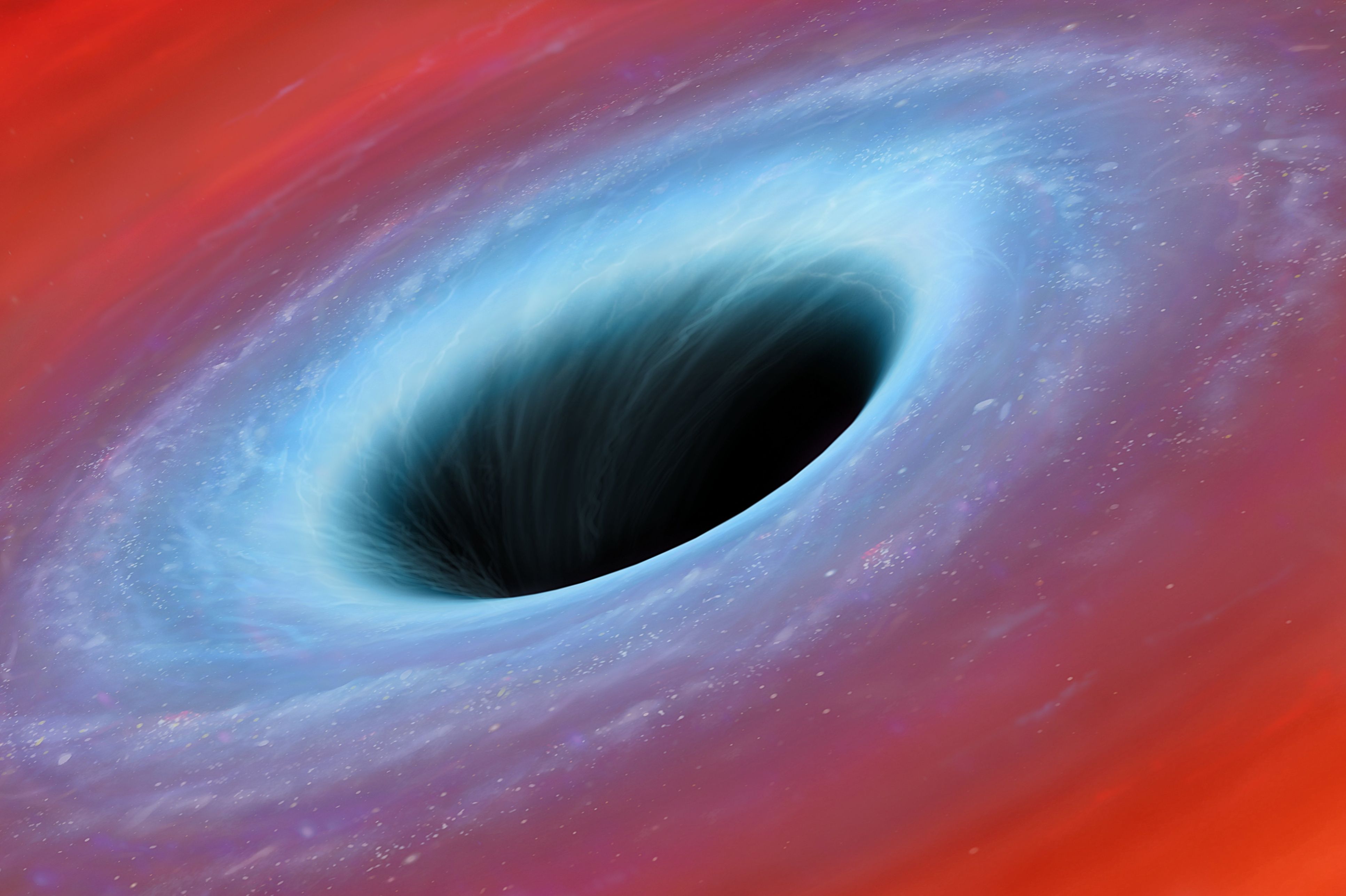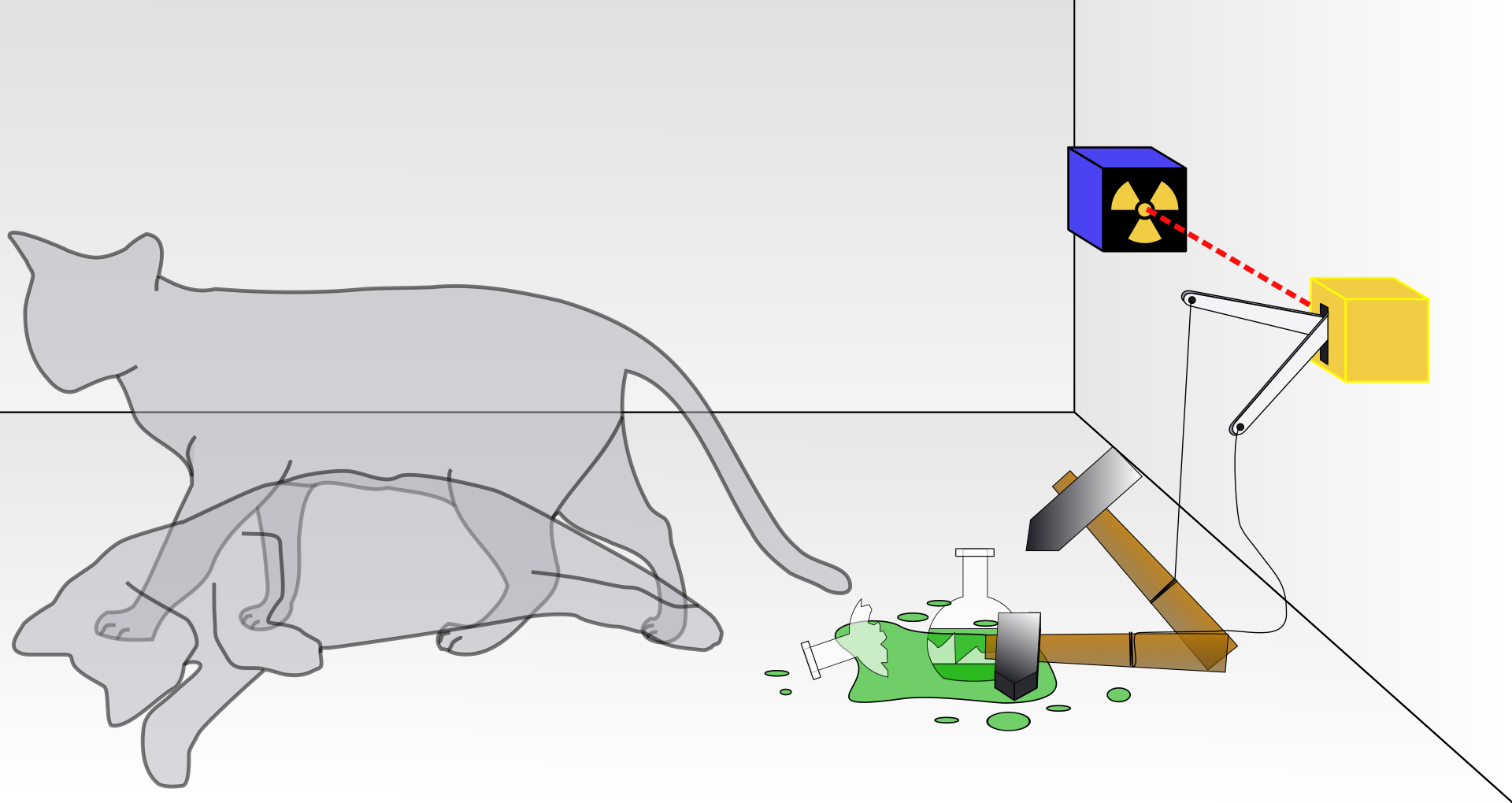
Simultaneously dead and alive, huge and small. According to new study, black holes have quantum properties
Black holes have properties characteristic of quantum particles. According to a new study published in the journal Physical Review Letters, the mysterious cosmic bodies can be both small and large, heavy and light, dead and alive, like Schrodinger's legendary cat, Space.com reported.
The new study, based on computer simulations, aims to find an elusive and seamless connection between the principles governing the behavior of supermassive objects, such as black holes, and the smallest subatomic particles.
What is the new experiment about?
The research team developed a mathematical framework that placed a simulated quantum particle outside of a simulated supermassive black hole. The simulation showed that the black hole exhibited signs of quantum superposition, the ability to exist in multiple states simultaneously, in this case being both massive and nonmassive.

"We wanted to see whether [black holes] could have wildly different masses at the same time, and it turns out they do," study lead author Joshua Foo, a PhD researcher in theoretical physics at the University of Queensland, said in a statement. "Until now, we haven't deeply investigated whether black holes display some of the weird and wonderful behaviors of quantum physics."
The most famous example of quantum superposition is Schrodinger's legendary cat, a mental experiment conducted by physicist Erwin Schrodinger in the early 20th century to demonstrate some fundamental problems of quantum physics. According to quantum theories, subatomic particles exist simultaneously in several states until they interact with the outside world. As a result of this interaction (it can be a simple act of measuring a particle or observing it) a particle appears in one of possible states.
Schrodinger's cat example
Schrodinger, who won the Nobel Prize in Physics in 1933, wanted to show with this scientific experiment the absurdity of quantum theory, because it assumes that a cat locked in a box can be dead and alive at the same time, based on the random behavior of atoms, as long as the observer of the cat does not violate the superposition.

However, as it turns out, if the cat in the box could die regardless of the observer's actions, then the quantum particle can indeed exist in a dual state. And this new study, published in Physical Review Letters, shows that a black hole can also exist in a binary state.
Israeli-American theoretical physicist Jacob Beckenstein was the first to suggest that black holes might have quantum properties. Since a black hole is defined by its mass, he said, its quantum superposition must mean that these strange gravitational gates can have multiple masses falling under a certain ratio.
"Our modeling showed that these superposed masses were, in fact, in certain determined bands or ratios — as predicted by Bekenstein," study co-author Magdalena Zych, a physicist at the University of Queensland and a co-supervisor of the research, said in the statement. "We didn't assume any such pattern going in, so the fact we found this evidence was quite surprising."
- Related News
- The end of the Universe: 3 plausible theories of a global apocalypse
- Mutated bacteria resistant to drugs found on the ISS: What does this mean and why is it a problem?
- 4 flares erupted from Sun in rare event: the Earth may be hit by geomagnetic storm (video)
- 11 incredible satellite photos published on Earth Day
- NASA shows all of Ingenuity's flight trajectories in one video
- Could life exist on Saturn's moon Enceladus?
- Most read
month
week
day
- Meta unveils Llama 3 and claims it's the "most powerful" open source language model 878
- Once in a lifetime phenomenon: This year we will observe a star explosion that occurred 3,000 years ago 873
- WhatsApp to integrate AI function: What will it do? 813
- Google fires 28 employees who protested against company's cooperation with Israel 805
- iPhone 17 Plus will have smaller screen 741
- 5 best smartphones with IPS screens 735
- How often is it worth replacing a smartphone with a new one? 710
- How DNA analysis helps to solve crimes and who can sell your DNA data and why: Interview with former FBI scientist Bruce Budowle 698
- Huge battery, IP68/IP69K and MIL-STD-810H certifications: Ulefone will present the Armor Pad 3 Pro tablet (photo) 664
- What are the dangers of children's communication with neural networks, voice assistants? 584
- Archive
